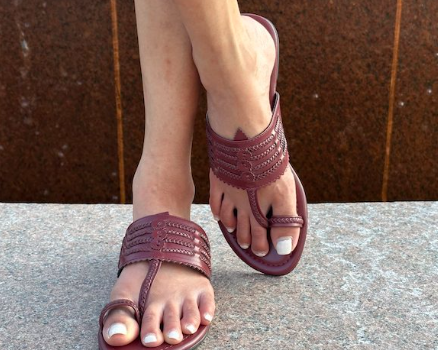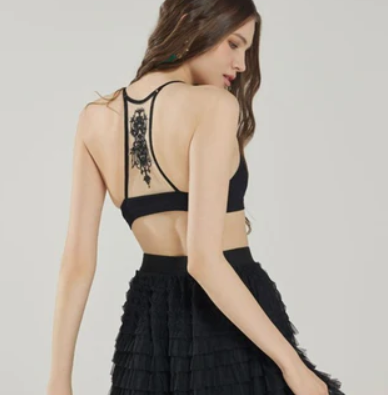
With so many styles available, it can be overwhelming to choose the right pair of sandals. From flip-flops to gladiators and slides, how do you know which one is best for your feet? The perfect pair of sandals should provide both comfort and style. With a little guidance, you can find sandals that fit just right and keep you comfortable all day long. Let’s dive into how to choose the right sandals for your feet and lifestyle.
Understanding Your Foot Type
Before you start shopping for sandals, it’s crucial to understand your foot type. Knowing whether you have flat feet, high arches, or neutral arches will help you find the right fit and support. Here’s how to identify your foot type:
Flat Feet
If the arch of your foot almost touches the ground when standing, you likely have flat feet. People with flat feet often overpronate, meaning their feet roll inward. For this foot type, look for sandals with strong arch support and firm midsoles to prevent discomfort.
High Arches
High arches are characterized by a noticeable gap between the arch and the ground. People with high arches tend to underpronate, or supinate, which can cause pressure on the heels and balls of the feet. Sandals with cushioning and gentle arch support will provide relief and comfort.
Neutral Arches
If your foot has a slight arch with a balanced contact with the ground, you have neutral arches. Lucky for you, your feet can accommodate a wide range of sandals. Look for well-cushioned, flexible sandals for all-day comfort.
If you’re unsure of your foot type, try the wet foot test. Simply wet your feet and step on a piece of paper to check the imprint—this will help you determine whether you have flat, high, or neutral arches.
Why Support and Fit Are Crucial
Support and fit are essential for your foot health. Sandals that are too tight or poorly fitted can lead to foot pain, blisters, or long-term issues like plantar fasciitis. A well-fitting sandal provides stability, helping prevent slips and falls, while the right support reduces strain on your joints and arches. Taking the time to ensure a proper fit will keep you comfortable and protect your feet in the long run.
Exploring Different Materials
The material of your sandals plays a significant role in both comfort and durability. Here’s a look at some common sandal materials:
Leather or Faux Leather
Leather sandals are durable and conform to your foot shape over time, offering a custom fit. They’re versatile and can easily be dressed up or down, making them a great option for any occasion.
Synthetic Materials
Synthetic sandals, such as those made from polyurethane, are lightweight and often more affordable than leather. They mimic the look of leather but are easier to maintain, offering a convenient and budget-friendly option.
Canvas
Canvas sandals are breathable and comfortable, making them ideal for casual, warmer days. They’re great for laid-back outings, providing a relaxed yet stylish look.
Rubber
Perfect for beach days or poolside relaxation, rubber sandals are water-friendly and incredibly durable. They’re easy to clean and maintain, making them a practical choice for wet conditions.
Cork
Cork footbeds are known for their comfort and shock absorption. They conform to the shape of your feet, providing a personalized fit. Often paired with leather or fabric uppers, cork sandals offer a mix of style and comfort.
Tips for Trying on Sandals
When trying on sandals, there are a few tricks to ensure they fit properly and feel comfortable:
- Shop in the Afternoon: Your feet tend to swell throughout the day, so trying on sandals in the afternoon will give you a better idea of how they’ll fit when your feet are at their largest.
- Try Both Sandals: Since your feet may not be identical, it’s important to try on both sandals to ensure they fit comfortably on both feet.
- Bring Socks or Insoles: If you plan to wear socks or insoles with your sandals, bring them along while shopping to ensure the best fit.
- Check the Heel Fit: Your heel should sit comfortably in the sandal without sliding out. A secure heel fit is key to avoiding blisters and providing stability.
- Test Flexibility: Gently bend the sandal to check for flexibility. While the ball of the foot should flex comfortably, the sole should remain firm for proper support.
- Walk Around: Take a few steps in the sandals to make sure there are no pressure points or pinching. The sandals should feel comfortable with every step.
Shopping for Sandals Online: Extra Tips
If you prefer shopping online, here are some helpful tips to ensure a smooth experience:
- Check the Return Policy: Make sure the retailer has a generous return or exchange policy, just in case the sandals don’t fit as expected.
- Read Customer Reviews: Reviews from other shoppers can give you valuable insights into the fit, comfort, and durability of the sandals. Look for reviews from people with similar foot types to get the most relevant advice.
With this guide, you’re equipped to choose the right sandals for your feet and lifestyle. Whether you’re looking for comfort, durability, or style, the right pair of sandals can make all the difference in how you feel and how well you move. Happy sandal shopping!










